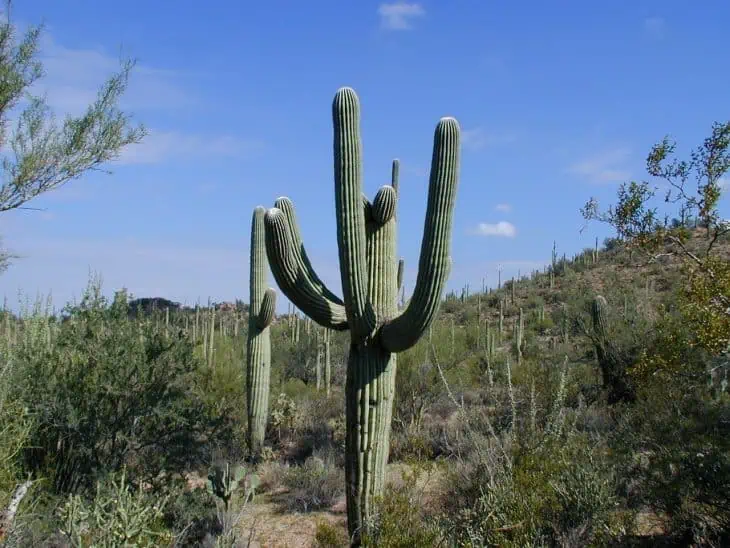
The saguaro cactus is the face of the Sonoran Desert and is one of the oldest living giants in the US. It’s undeniably wonderful and breathtaking just to be in the presence of such a specimen that makes you want to reflect on a lot of things. Being able to withstand the test of time and witness the constant changes in the surroundings for more than a hundred years would be awesome enough. In fact, the cactus itself symbolizes the resiliency of the natives who have been striving to survive in the desert for generations, while cradling traditions, and the rich history of their culture. If you want to learn more, our team has listed 40 saguaro cactus facts to teach you more about this lovely plant. Enjoy reading!
- The saguaro cactus is a tree-like cactus species in the monotypic genus Carnegiea.
- This cactus can grow up to 12 meters or 40 ft tall.
- It is native to the Sonoran Desert in Arizona, the Mexican state of Sonora, and the Whipple Mountains and Imperial County areas of California.
- The saguaro blossom is the state wildflower of Arizona.
- Its scientific name is given in honor of Andrew Carnegie.
- Saguaros have a relatively long lifespan, often exceeding 150 years.
- They may grow their first side arm around 75–100 years of age, but some never grow any arms.
- Arms are developed to increase the plant’s reproductive capacity, as more apices lead to more flowers and fruit.
- They are slow-growing, but routinely live 150 to 200 years.
- They are the largest cactus in the United States.
- The growth rate of this cactus is strongly dependent on precipitation.
- Saguaros grow slowly from seed and maybe only 6.4 mm (1⁄4 in) tall after 2 years.
- Saguaros are stem succulents and can hold large amounts of water.
- They have a very large root network that can extend up to 30 m (100 ft).
- It has also long taproots of up to 1 m (3 ft 3 in) deep.
- The saguaro cactus is a common image in Mexican culture and American Southwest films.
- Over 50 arms may grow on one plant.
- The tallest saguaros ever measured was an armless specimen found near Cave Creek, Arizona. It was 78 ft (23.8 m) in height before it was toppled in 1986 by a windstorm.
- A saguaro can absorb and store considerable amounts of rainwater, visibly expanding in the process, while slowly using the stored water as needed.
- This characteristic enables the saguaro to survive during periods of drought.
Was this page helpful?
Our commitment to delivering trustworthy and engaging content is at the heart of what we do. Each fact on our site is contributed by real users like you, bringing a wealth of diverse insights and information. To ensure the highest standards of accuracy and reliability, our dedicated editors meticulously review each submission. This process guarantees that the facts we share are not only fascinating but also credible. Trust in our commitment to quality and authenticity as you explore and learn with us.
